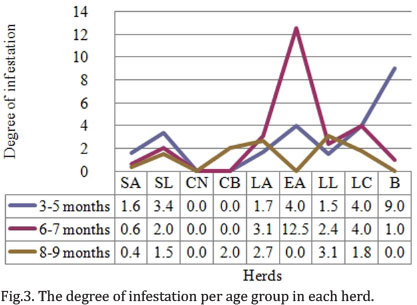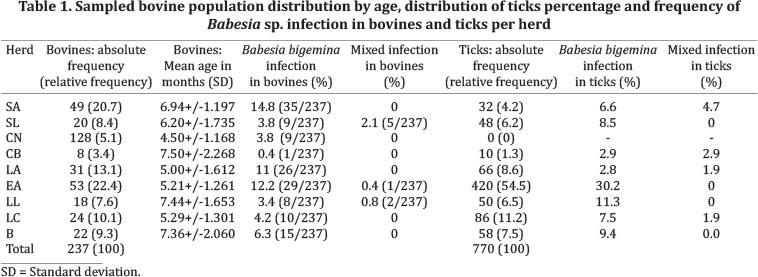Babesia sp. is a protozoan hemoparasite that affects livestock worldwide. The Colombian Middle Magdalena is an enzootic region for babesiosis, but there is no previous research providing detail on its transmission cycle. This study aims to assess some Babesia sp. infection indicators in cattle and ticks from the area, by using direct microscopic and molecular techniques to detect the infection. In the cattle, 59.9% and 3.4 % positivity values for B. bigemina and mixed infection (B. bovis + B. bigemina) were found respectively. In ticks, the positivity of B. bigemina reached 79.2% and 9.4% for the mixed infection. The degree of infestation in the region was 3.2 ticks per bovine. There was positive correlation between tick control acaricide frequencies and infestation in bovines. This leads us to infer that control periodicity greater than 90 days, in stable zones, is an abiotic factor that benefits the acquisition of protective immunity in calves, the natural control of the infection and eventual disease absence. It is necessary to monitor the disease by applying new entomological and parasitological indicators showing the complexity of this phenomenon.
Babesia sp.; babesiosis; cattle; tick-borne diseases; Rhipicephalus (Boophilus) microplus




